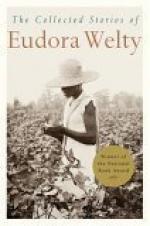|
This section contains 3,423 words (approx. 12 pages at 300 words per page) |

|
SOURCE: "From Civil War to Civil Rights: Race Relations in Welty's 'A Worn Path'," in Eudora Welty: Eye of the Storyteller, edited by Dawn Trouard, The Kent State University Press, 1989, pp. 165-72.
In the following essay, Butterworth argues that "recent revisionist criticism . . . frequently falsifies Welty's portrayals of black-white relations in earlier eras. " Butterworth emphasizes the ambiguity that characterizes Welty's treatment of racial themes.
Since such seminal studies as Robert Penn Warren's "The Love and Separateness in Miss Welty" and Harry Morris's "Eudora Welty's Use of Mythology," it has become traditional to interpret Welty's characters in terms of mythological and cultural archetypes. Welty's black characters frequently have evoked such parallels. In addition to the obvious reference to the Egyptian resurrection myth implied by her name, Phoenix Jackson in "A Worn Path" has been compared to the pagan fertility figures Kore, Demeter, and Persephone, Osiris, Attis, and Adonis, as well...
|
This section contains 3,423 words (approx. 12 pages at 300 words per page) |

|


